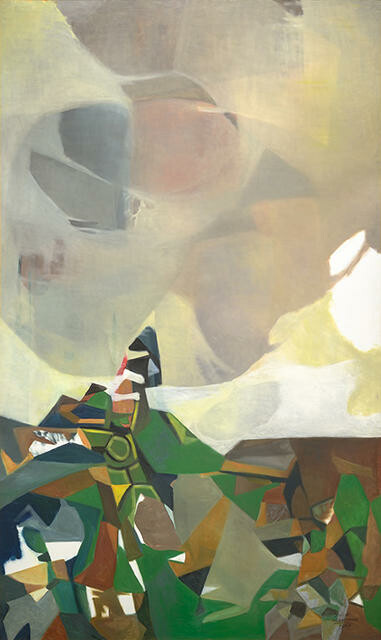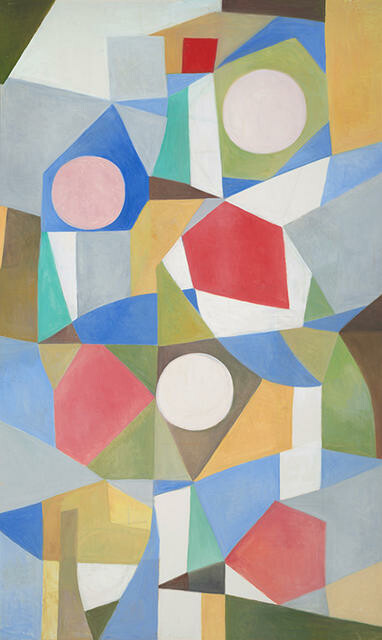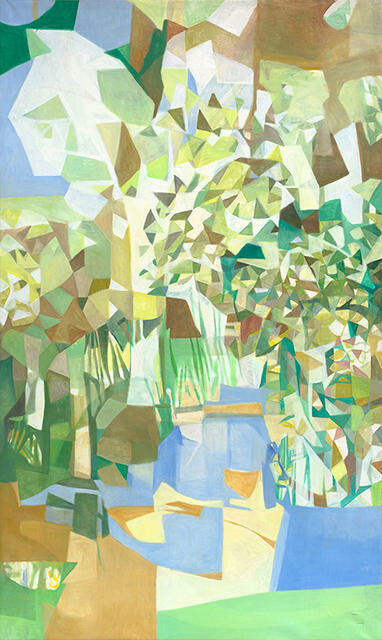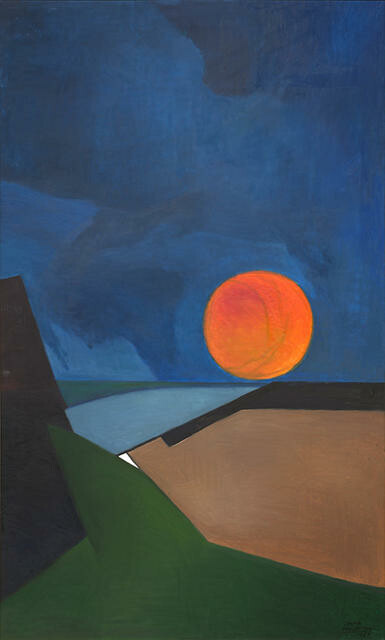Louise Henderson months
By Tim Jones
Seven of Louise Henderson's The Twelve Months series are in the permanent collection of Christchurch Art Gallery Te Puna o Waiwhetū. Four were the gift of the McKegg family in 1999 and three were presented by the Friends of Christchurch Art Gallery in 2020. Four further works from this series were borrowed from other collections for the 2019/20 exhibition Louise Henderson: From Life, a partnership project between Auckland Art Gallery Toi o Tāmaki and Christchurch Art Gallery Te Puna o Waiwhetū .
Below is the text that accompanied all eleven works in that show, as well as the seven paintings that reside permanently with us.
'The Twelve Months' distilled Henderson’s impressions of life in Aotearoa New Zealand into a dozen tall canvases, filtering the rhythms of the year through her ‘abstract poetic of nature’.
In Aotearoa New Zealand, the year begins with holidays and summer heat. Henderson’s January suggests activity and freedom; contrasting blue sky and ocean with golden grass and green native forest. By February, the late-summer sun scorches the hills to a fiery ochre. Recalling a visit to the Hokianga, in February Henderson includes paddocks and a concrete water trough that reflects the milky afternoon sky.
For March she painted Mount Hobson, as seen across the Newmarket viaduct from her kitchen window. She described it as a month of financial pressures as the tax year closed, marking the end of summer frivolity: “Everyone now is serious, back to work, filled with pressures.”Henderson filled April with small shards of colour, fluttering down like autumn leaves, and crowded its sky with dark storm clouds. May brought a startling colour change, prompted by the artist’s glimpse of the moon rising over her backyard, huge and red in the dark late-autumn sky.The winter months are dominated by the weather.
In June hills and houses are buffeted by a whirling vortex of water and wind, the land rinsed clean with showers. In July she propels us high up into the rain-laden clouds, magnifying water droplets until they threaten to engulf us. August (not exhibited) recalled Henderson’s cubist roots, with its angular arrangement of light-coloured structures beneath a pale sky and low-slung sun.
September is a fracturing kaleidoscope. “[L]ittle triangles,” declared Henderson, “that is the right construction for new buds and fresh leaves bursting out … to keep the spirit of spring alive.” For October, which she associated with the birth of her only child, the central image is a closely cropped view of a pregnant woman, her belly speckled with red and pink spheres: “bubbles of life circulating in the womb”. In November angled forms cascade down like confetti – “fiesta-time”, proclaimed the artist, “everyone happy”. December’s joyfully toned composition holds an abstracted nativity. The green and red of a northern hemisphere Christmas are mere flashes in a summery, beachy riot of pink, blue and yellow. A golden figure eight encircles the composition – December is a gift, waiting to be unwrapped.






